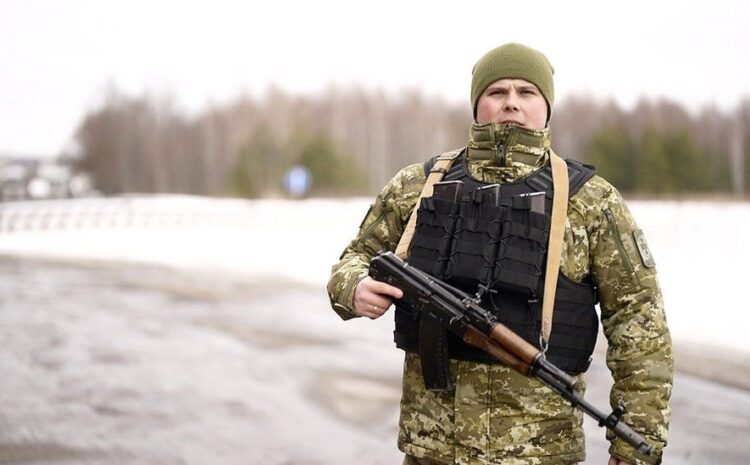
Maj Sergiy Khomenko says he serves to protect Ukraine’s independence
By Fergal Keane
BBC News, Northern Ukraine
They stand guard at the Senkivka crossing, where the Kremlin once celebrated the unity of the Soviet world.
A few truck drivers heading south to the capital, Kyiv, cluster near the Three Sisters monument – a white obelisk erected back in 1975 to mark where the borders of Ukraine, Russia and Belarus meet.
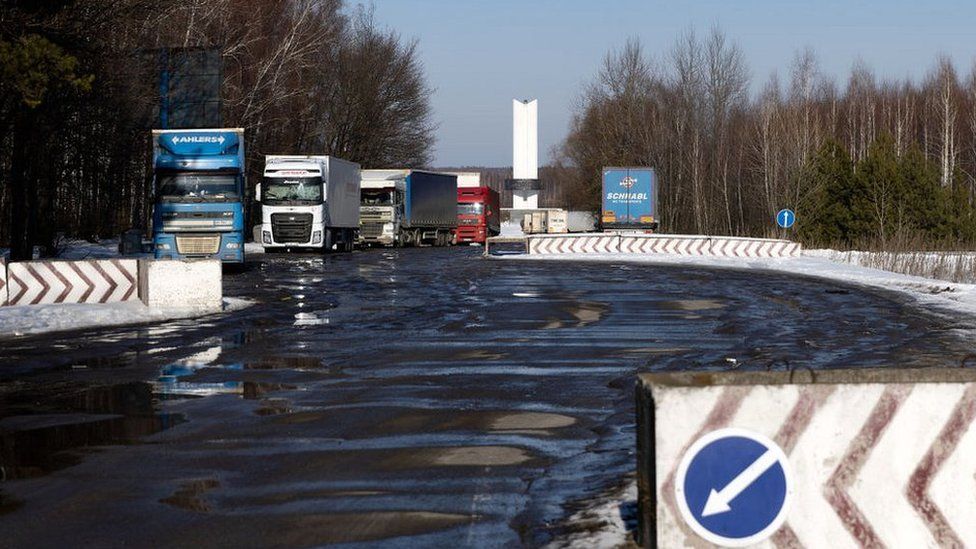 IMAGE SOURCE, GETTY IMAGES
IMAGE SOURCE, GETTY IMAGESMaj Sergiy Khomenko, 29, comes from a military family and grew up in a border village. The current crisis with Russia would have been unimaginable in his parents’ youth.
But he serves a Ukraine that has been consistently pushing away from the orbit of Moscow.
“The independence of Ukraine is enshrined in all our documents. It is in our constitution. As a military man, I need to protect this,” he tells me.
In other words, he and his men are determined not to be destabilised by the presence of more than 100,000 Russian troops on his country’s frontiers.
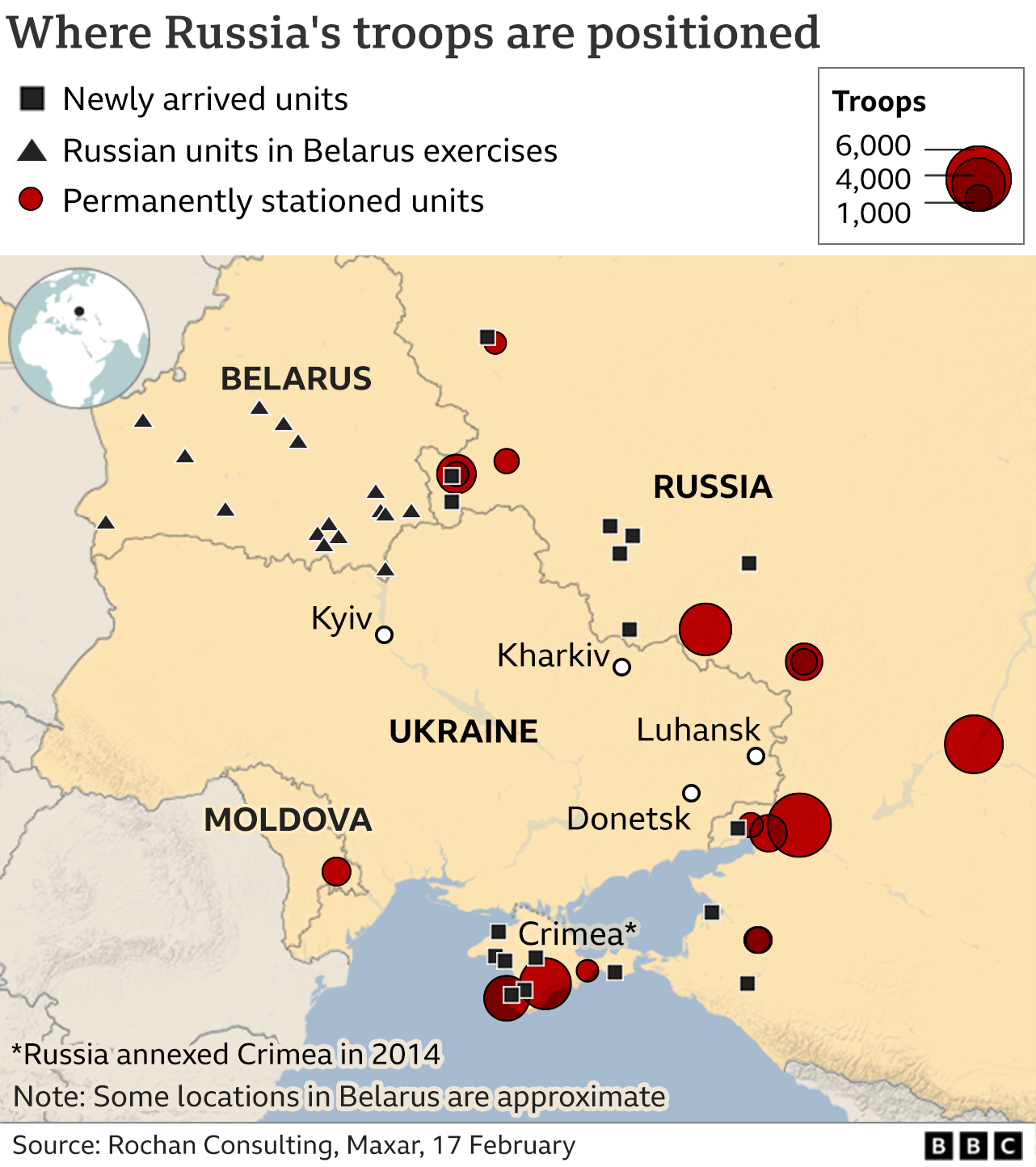
There are bunkers dug into the ground in front of the border fence. Guards in white, winter camouflage patrol the area.
But while it is impossible to know what forces might be concealed in the forest, this does not look like the place Ukraine would mount a sustained defence against any Russian invasion.
This area is at the heart of what the historian Timothy Snyder calls the “bloodlands” of Eastern Europe where, he estimates, 14 million people were killed in the era of the dictators Adolph Hitler and Joseph Stalin.
While the generation which knew the horrors of the 20th Century is fading, the stories of a landscape dotted with mass graves are part of the inherited memory here.
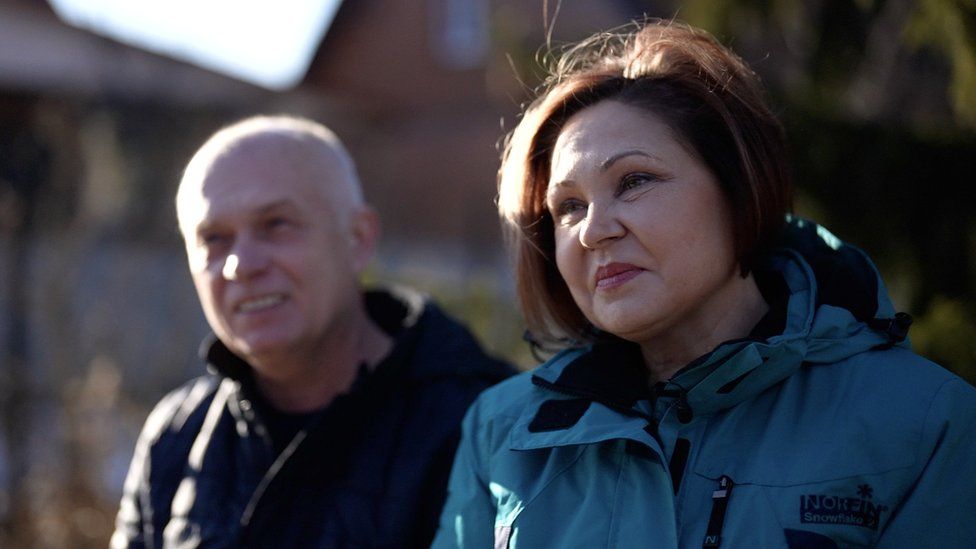
Further along the border, in the town of Slavutych, I met Valeryi and Galyna Sulimov who have been married for 40 years. He is a Ukrainian and she is Russian.
They worked at the nearby Chernobyl nuclear plant until the reactor explosion in 1986 that caused an environmental catastrophe and claimed the lives of 100 people, among them many friends of the couple.
Galyna was on duty that day but was sent home early before the explosion, because it was her birthday.
They moved to Slavutych soon after it was built as a “model” Soviet town to house those evacuated from the radiation zone around Chernobyl.
Each neighbourhood of neat apartment blocks or small wooden houses still bears their old Soviet era names: Armenia quarter, Estonia quarter and many more.
Close by is a mural devoted to the civilian casualties of war, depicting the horrors of the atomic bombing of Hiroshima in 1945 and the bombing of Guernica during the Spanish Civil War. This was to be the place where life would start again.
But for Valeriy and Galyna, this present crisis has caused deep wounds in their personal world.
There are arguments with their relatives in Russia. Their daughter lives there along with Galyna’s extended family.
“I think it is a disaster. It changes our lives dramatically,” says Valeriy. He cannot see a time of friendship between Russia and Ukraine returning.
Galyna nods in agreement. Her answer highlights the intimate pain caused by big politics: “The situation is so unreal. I can’t believe my neighbours could come to my house and destroy it. I can’t believe it. Its impossible!”
Her hope is that Ukraine and Russia will both be democracies in the future. Maybe then the divisions can be healed. Seen from the border, where rumours of war fly back and forth, it seems an optimistic hope.
-
Ukrainians wary of Russian claims of withdrawal
1 day ago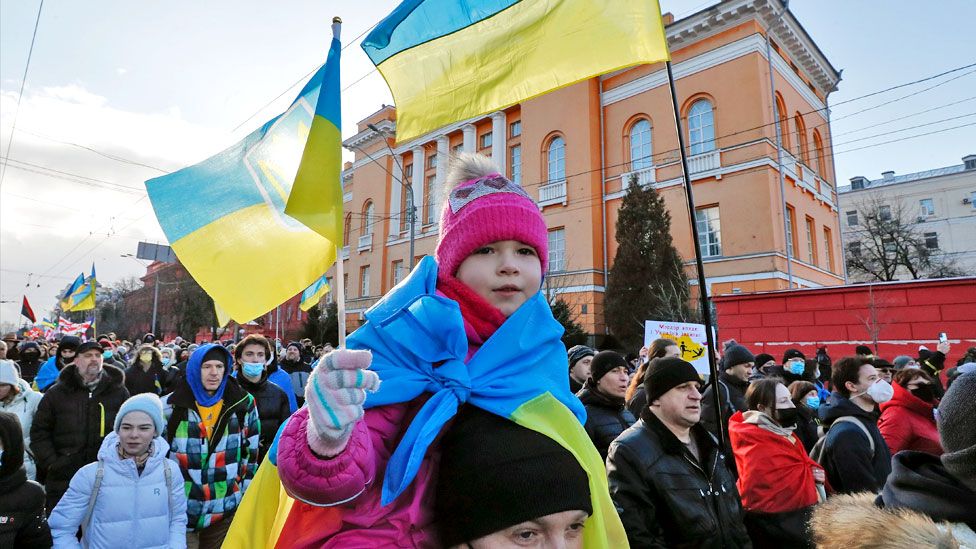
-
Ukraine: How big is the Russian military build-up?
6 hours ago
-
Mixed signals from Russia over Ukraine, says UK PM
2 days ago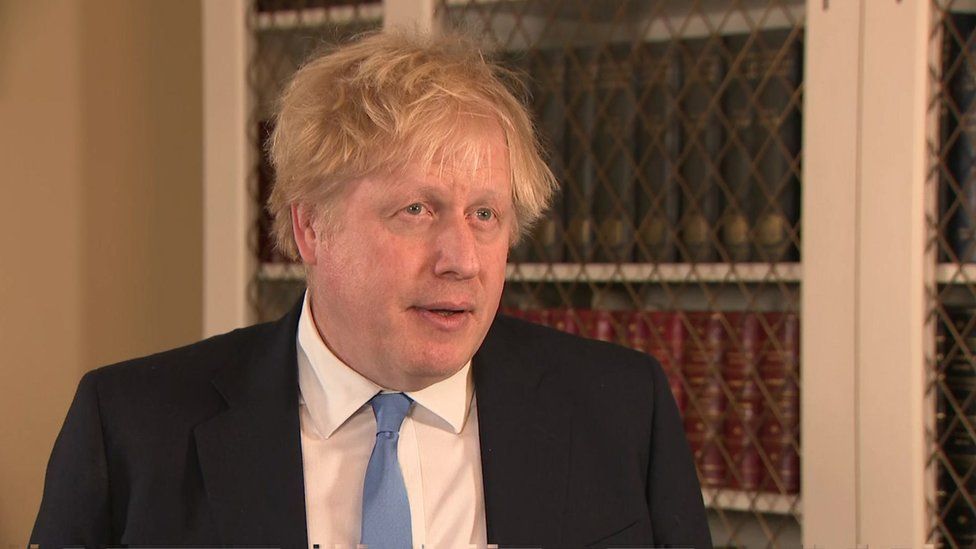
-
How much Russian money is there in the UK?
7 hours ago
